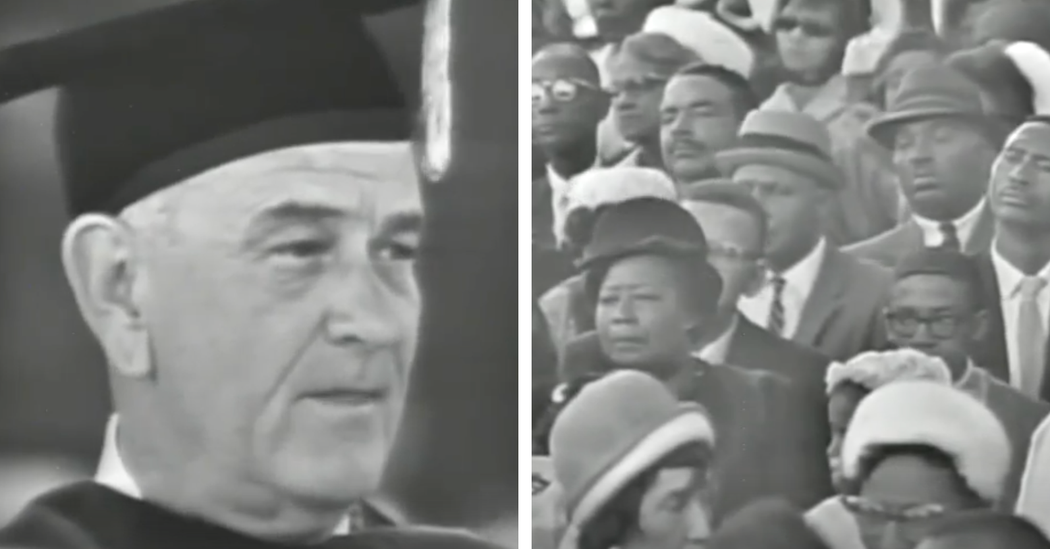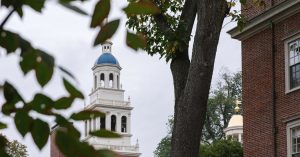
With affirmative action taken away from college, race-conscious work programs might be next
What does blackness really tell about the American history of racism? A case study of the racial backlash at UNC and Harvard
Universities “have concluded, wrongly, that the touchstone of an individual’s identity is not challenges bested, skills built, or lessons learned but the color of their skin”, Chief Justice John Roberts wrote for the majority. “Our constitutional history does not tolerate that choice.”
The reason that some US universities have adopted race-conscious admissions — sometimes referred to as affirmative action — is to address centuries of racism and exclusion in the United States. Today’s issues make it more difficult for people in minority groups to be admitted to academic institutions.
The intensity and duration of the attack is sad confirmation that many Americans remain unwilling to reckon with the barbarity of our racial history. Every period of progress for Black people has been met with a racial backlash. In response to Reconstruction, Southern white people developed an entirely new and mythical history of slavery, the Civil War and ultimately Reconstruction. The insistence on denying history is still going strong more than a century later. Some conservative states are prohibiting teaching the truth about racial oppression, with dismissal and even jail for teachers who refuse to do so.
“We have to think beyond just the who-gets-in and who-gets-to-enroll piece,” says Baker, at Southern Methodist University. The ruling could affect financial aid decisions, including targeted scholarships and efforts by campuses to create communities of students from diverse backgrounds.
“However well-intentioned” the policies at UNC and Harvard were, Roberts wrote, the universities failed to use them within the confines of the narrow restrictions that previous court rulings had allowed.
Roberts wrote that schools could still consider the discussion of how race affects his or her life, “be it through discrimination, inspiration, or otherwise.” He wrote through a specific application essay or other means.
Using race is the most effective way to enroll a more racially equitable class. Baker says that nothing comes close to it. There are other ideas and tools. But if race is not taken into consideration, those different types of techniques and tools do not replicate what race-conscious admissions policies do.”
There are nearly 4,000 colleges and universities in the U.S., and only a small portion — slightly more than 200 — have highly selective admissions, where fewer than 50% of applicants get in. That’s just over 200 schools where the ruling on a race-conscious admissions process could make a significant difference.
They are still a key point of access to government and industry. As just one example, currently eight of the nine Supreme Court justices attended law school at Harvard or Yale.
A Critique of University Diversity: The Loss of Black and Latino Students to Highly-Selective Universities After Proposition 209
In the simulations, removing race and relying on different combinations of high school grades, test scores, or social-economic indicators did not yield more ethnically diverse classes.
“It boils down to: The more information that you are able to consider about the educational opportunities and disadvantages that an individual has had in their life, the better you as an admissions officer are going to be at understanding who is going to be a qualified applicant.”
Mabel says current admissions criteria reinforce disparities in educational opportunity that exist in the K-12 system, and that research has shown that at highly selective colleges, “students admitted with lower grades and scores are just as likely to succeed as the rest of their classmates.”
In 1996, California voters approved Proposition 209, an affirmative action ban at public universities in the state. Before the ban, UC Berkeley and UCLA were roughly representative of the California high school graduates who were eligible for university admission, according to an economist.
She wonders if a program designed to increase the number of Black doctors will be challenged once they’re in medical school.
OiYan Poon, an education professor at the University ofMaryland, College Park, points to early court files in the Harvard case in order to argue against any use of race or ethnicity in the educational setting.
Baker agrees: “We want to make sure that we don’t overstate what the legal contours are, because that might create a chilling effect where institutions restrict themselves further than the legal limits.” She’s especially interested in the line in Justice Roberts’ majority opinion about how schools can still consider the way race impacted an applicant’s life.
The ban took effect with the incoming class of ’98. Diversity plummeted at UC’s most competitive campuses. The 2020 study shows that the number of black and Latino students at UCLA and UC Berkeley fell by 40%. As a result of the ban, Bleemer found that Black and Latino students who might have gotten into those two top schools enrolled at less competitive campuses.
“Black and Hispanic students saw substantially poorer long-run labor market prospects as a result of losing access to these very selective universities,” Bleemer told NPR. There was no noticeable gain in long-run outcomes for the white and Asian students who took their place.
It is possible to promote campus diversity by automatically admitting top students from the state of Texas to the University of Texas at Austin. Lotteries have also been proposed, where eligible students with high qualifications would be randomly selected for acceptance.
The two cases are very similar, but one is a state school that favors in-state students and one is a private school that only admissions 5% of all students.
In amicus briefs that were filed with the Supreme Court, the University of Michigan and the University of California, Berkeley admitted that they were falling short in meeting their diversity goals without using race.
Kelly Slay, an assistant professor at the University who studies affirmative action, believes that colleges should go test-optional, increase targeted recruitment, and expand free-college programs in order to maintain their ethnic and racial diversity.
But, she says, “we don’t have anything that works as effectively at producing and enhancing racial diversity as race-conscious affirmative action. We have over 20 years of data and research on that.”
The 6-3 decision on the immigration ruling could affect the composition of students and faculty members, and the make-up of the academic staff, according to a University of Maryland researcher
The 6-3 ruling, split on ideological lines, reflects the court’s rightward turn under Republican President Donald Trump, who appointed three justices to the nine-person bench.
This decision will not only have sweeping effects on the composition of student bodies, but it could also affect the make-up of staff, says Julie Park, a researcher at the University of Maryland in College Park, whose work focuses on racial equality in higher education. “For better or for worse, these elite or name-brand institutions are a big part of the pathway into the professoriate,” Park says.
For instance, a study published last September in Nature2 found that just 20% of institutions that grant PhDs in the United States supplied 80% of tenure-track faculty members across the country from 2011 to 2020. These institutions include Harvard University and Stanford University in California, but the list does not have any historically Black colleges and universities or Hispanic-serving institutions.
According to Park, there might be a decline in the diversity of future scientists who are trained at universities if race-conscious admissions aren’t made. The number of black and Hispanic workers is under-represented in the workforce of science, technology, engineering and mathematics. (Black people make up around 14% of the US population, and Hispanic people account for nearly 19%.) Even though race-conscious admission policies are in place, Park says she is concerned because the STEM hasn’t been doing so well.
Legacy admissions, which give students a leg up if they have alumni family members, and to no longer require standardized testing are all things that elite colleges could do, according to specialists. The practices have been shown to favor wealthy applicants.
The Californian High School: A Case Study for Black and Latino Business Leaders Under the State’s 14th Amendment and its Supreme Court Assembling
The problem is that, as a matter of history, it’s not true. The 14th Amendment was passed after the Civil War to allow for consideration of race in legislation. The same Congress that passed the amendment enacted several such laws, including the Freedmen’s Bureau Acts, which helped former slaves secure housing, food, jobs and education.
The president of a small Southern California school that wasn’t subject to the state ban thinks that the ban on affirmative action is going to destroy its racial diversity.
Still, the California schools are unable to meet their diversity goals systemwide. Chang says his school is not where it wants to be. Black and Latino students in California’s high schools are often less likely than their counterparts in other states to receive a high school degree.
The UC system eliminated test scores as an admission requirement in 2020.
Observers wondered if the nation’s highest court would reverse decades old precedents allowing affirmative action if it grew more conservative in recent years.
As college admissions offices prepare to tailor their policies to the Supreme Court ruling, California offers lessons on what may be in store for the rest of the country.
“If you follow them into the labor market, for the subsequent 15 or 20 years, they’re earning about 5% lower wages than they would have earned if they’d had access to more selective universities under affirmative action,” Bleemer said.
The ban deterred Black and Latino prospective students. A study found that high performing minority students were discouraged from applying to schools that had more minority students.
Over 80 major corporations and businesses filed three briefs with the Supreme Court in support of their policies last summer, arguing that they improve company performance.
“Experience in a diverse university environment prepares students to interact with and serve racially diverse client and customer bases and to work with people of all backgrounds,” according to one brief written by over 60 prominent businesses, including Apple, General Electric, Google and Johnson & Johnson.
In addition, many companies he consults understand that maintaining race-conscious programs is important for Generation Z and future generations.
Business leaders need to figure out a way to make this work if they want to source future talent and sell to future in a real world where most of us do not live. It’s just the reality of it.
“The current structure of the workforces in corporate America suggests that there are tons of gaps between the races,” Tillery said, adding, “Diversity, equity and inclusion work can be reframed as trying to figure out what’s behind the processes creating these gaps and then filling the void by creating structures and processes to make sure that you’re not discriminating under Title VII.”
The DEI initiatives will not see any changes overnight. He argues that those programs fall under Title VII of the Civil Rights Act and that companies can maintain their programs by reframing their language.
This ruling means we can take legal action in the courts and win major victories. Now is the time to wage lawfare against the DEI colossus,” Miller wrote in a statement following the court’s decision.
Conservatives have done away with DEI-style programs in recent years. Several right-leaning groups have already begun calling for further action, including America First Legal, a nonprofit run by former Donald Trump adviser Stephen Miller that’s focused on doing away with race-focused policies.
The Supreme Court’s ruling regarding race-conscious programs in the workplace is expected to affect the focus of the mainly conservative groups that backed Students for Fair Admissions’ lawsuit.
” I think there are going to be some real consequences for the companies that are involved with DEI,” said a political science professor at a university who runs a consulting firm.
Legal experts say that the opinion might lead to changes to commonplace workplace initiatives like diversity, equity and inclusion.
The Supreme court’s ruling on affirmative action in higher education raises questions about the future of employer-run initiatives and programs that consider race.
The Superman of CW’s Lois and No Hard Feelings: A NPR Contributor’s Perspective on the Future of Middle Eastern Culture
Eric Deggans, an NPR critic, loves the CW’s Superman and Lois. He describes how the show remakes the classic couple and the role helplessness plays in Superman’s character arcs.
Movies: Jennifer Lawrence takes a crack at comedy in No Hard Feelings, a film about rich helicopter parents who hire a woman to seduce their teenage son to get him ready for college.
Nassim was born with a happy expression. He laughed even when his restaurant al-Tannour was destroyed after the Lebanese civil war broke out in 1975. He rebuilt and opened a shop that served Middle Eastern desserts. The store still stands today. NPR contributor Ari Daniel, who married Haddad’s cousin, chats with him amid the sounds of crispy, crunchy desserts being baked about how he’s able to keep laughing through decades of turmoil.
The Department of Commerce will release May figures later this morning. Personal spending jumped more than 4% in the first three months of the year and rose again in April, despite inflation and rising interest rates.
Source: https://www.npr.org/2023/06/30/1185273194/up-first-briefing-affirmative-action-student-loan-forgiveness-actors-strike-loom
The Up First Podcast – The Innocent Truth About Motion Picture and Television Producers (MIPP) Negotiations at the High Energy Colliders
The contract with major studios, networks, and streamers ends tonight. Actors could strike if the union doesn’t reach an agreement with the Alliance of Motion Picture and Television Producers or extend the deadline. They are joining the Writers Guild of America, who have been on strike.
tens of millions of Americans are gripped with anticipation for another Supreme Court decision. The justices are expected to give their opinion later today on President Biden’s student loan forgiveness plan.
Good morning. You are reading the newsletter. Subscribe here to get it delivered to your inbox, and listen to the Up First podcast for all the news you need to start your day.

